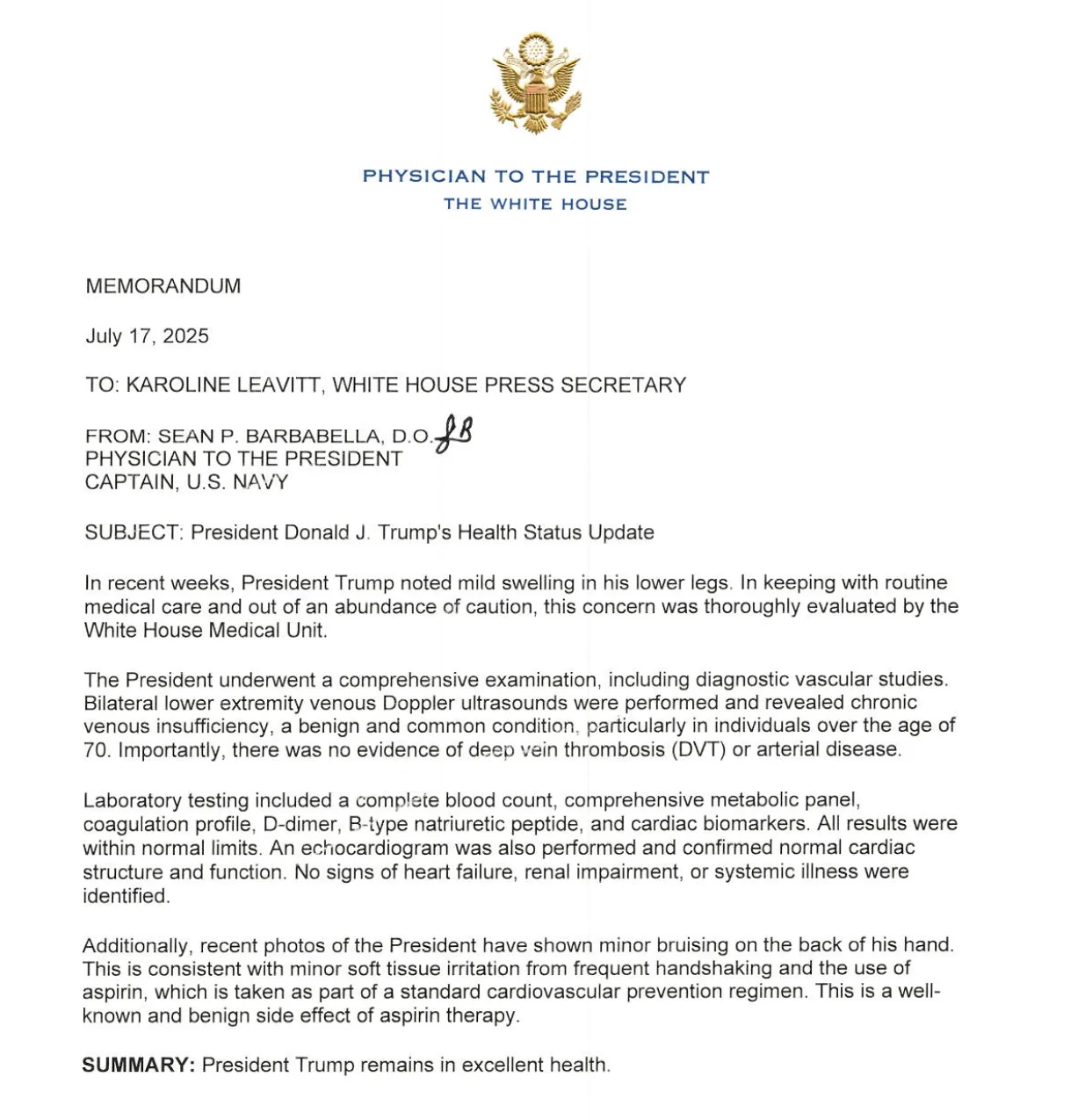
President Donald Trump reportedly has chronic venous insufficiency, a common condition of the blood vessels.
White House press secretary Karoline Leavitt told the Washington Examiner on Thursday about the condition after Trump was seen with makeup on his hand, apparently covering a bulge or discoloration.
Physician to the President Dr. Sean P. Barbabella issued a statement Thursday afternoon indicating that he had evaluated Trump after noticing “mild swelling in his lower legs.”
CVI is a relatively common condition, particularly for older adults over age 70. Barbabella’s report indicated that other tests to determine the severity of the condition came back within the normal range.

The physician’s report also addressed the viral images of the president’s hands, saying that the “minor bruising on the back of his hand … is consistent with minor soft tissue irritation from frequent shaking” and being on aspirin as a blood-thinning medication.
Here is everything to know about Trump’s CVI diagnosis.
CVI occurs when veins in the legs and arms become damaged and cause blood to pool in a particular area instead of flowing toward the heart.
When blood pools under the skin, it can result in blue or reddish-brownish patches on the skin that can easily break open if scratched or bumped.
Symptoms include aching or tired limbs, discolored skin, and swelling in the affected areas, usually in the lower legs and ankles.
CIV itself is usually not life-threatening, according to the Cleveland Clinic, but it is a progressive condition that can cause more pain and discomfort over time if left untreated.
The physician’s report said there was no evidence of deep vein thrombosis, a potentially dangerous blood clot most commonly in the legs or pelvis that can be fatal if left untreated.

CVI most commonly affects the legs because of gravity, with blood in the legs having to travel a greater distance to reach the heart. However, the condition can also affect the hands and arms.
A variety of causes could contribute to why the president may be experiencing CVI symptoms in his hands, including blood clots, trauma to the hand or arm, or an underlying blood vessel disorder.
Other chronic conditions, including high blood pressure or kidney problems, also affect overall vascular health.
The White House did not respond to the Washington Examiner’s request for comment when asked for more details about the president’s diagnosis.
According to the Cleveland Clinic, CVI affects roughly 1 in 20 adults in the United States, but milder forms of the condition are much more common.
Varicose veins, also known as spider veins, are caused by damaged blood vessels that bulge under the skin’s surface.
One in three adults has varicose veins, and 1 in 50 people who have varicose veins will go on to develop more serious CVI.

The goal of treating CVI is to improve blood flow and reduce pain and swelling associated with the condition, according to Johns Hopkins Medical Center.
Lifestyle changes, including improved diet and regular exercise, are the first-line treatment recommendations for CVI. Weight management is critical to relieve pressure on veins and damaged valves.
SALENA ZITO’S ‘BUTLER’ DEBUTS AT NO. 1 ON NEW YORK TIMES BESTSELLER LIST
Keeping the affected limbs elevated is also recommended to reduce pressure on the veins. Compression stockings or bandages are also common to reduce swelling.
Treatment does not reverse damage, but it can improve quality of life.

![Enjoy the [Road] Show Travel Mug with Handle, 14ozEnjoy the [Road] Show Travel Mug with Handle, 14oz](https://georgemagazine.com/wp-content/uploads/2024/08/479070202831754764_2048-300x300.jpeg)

